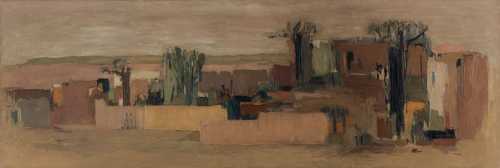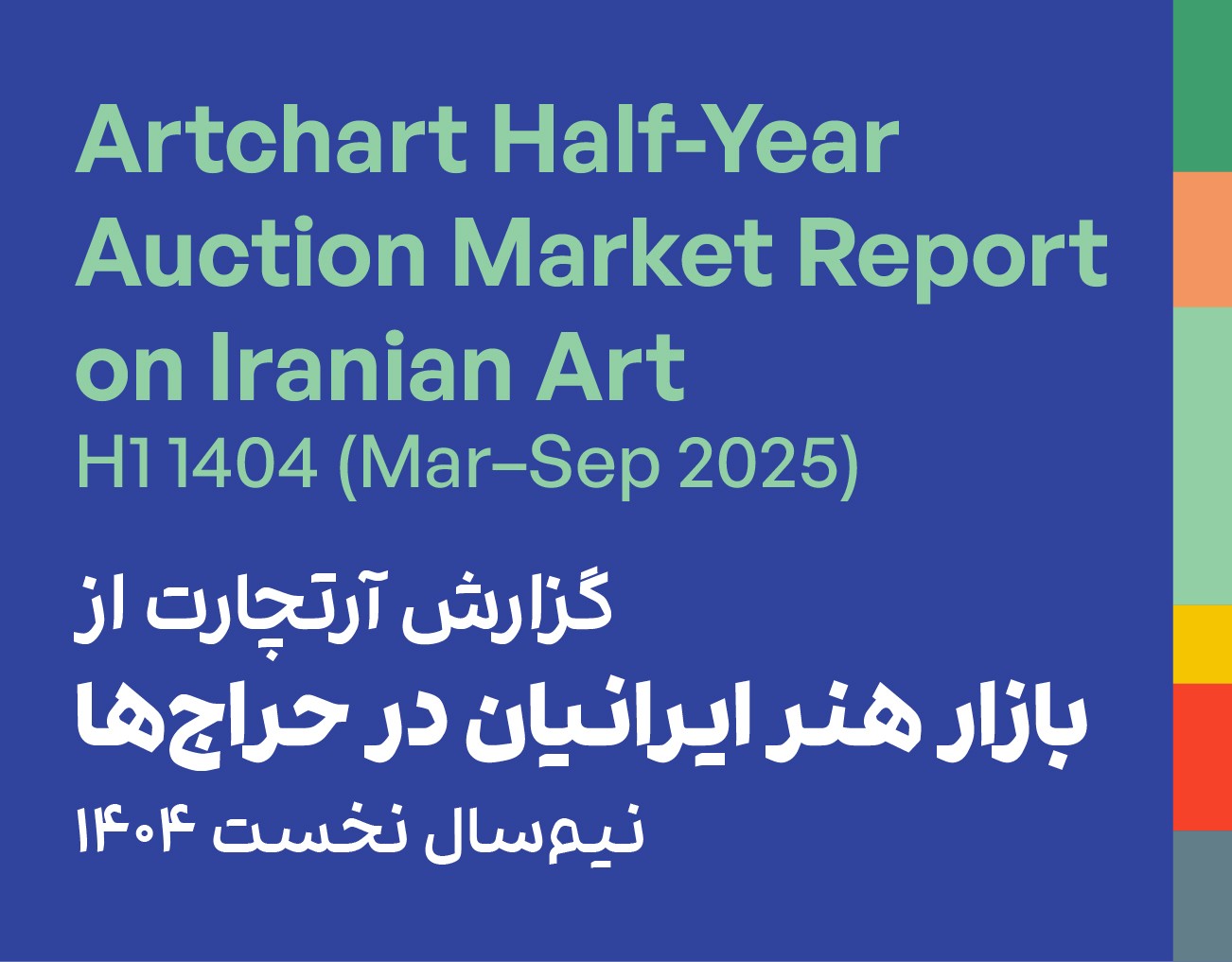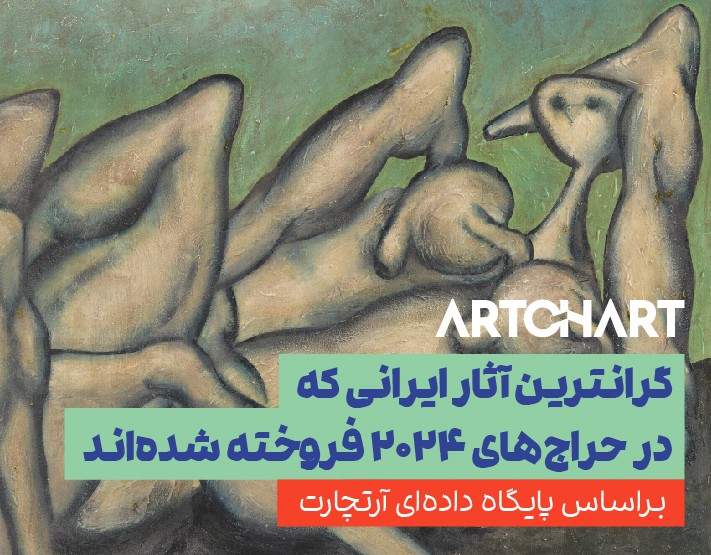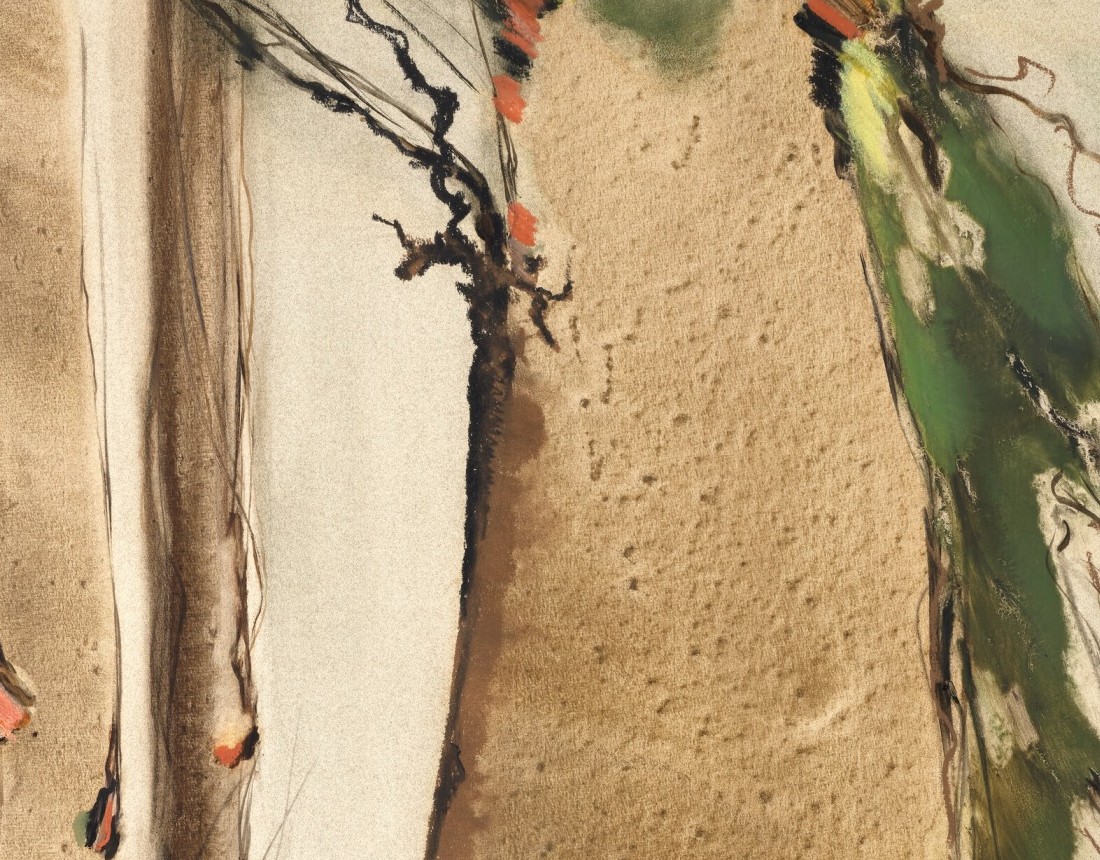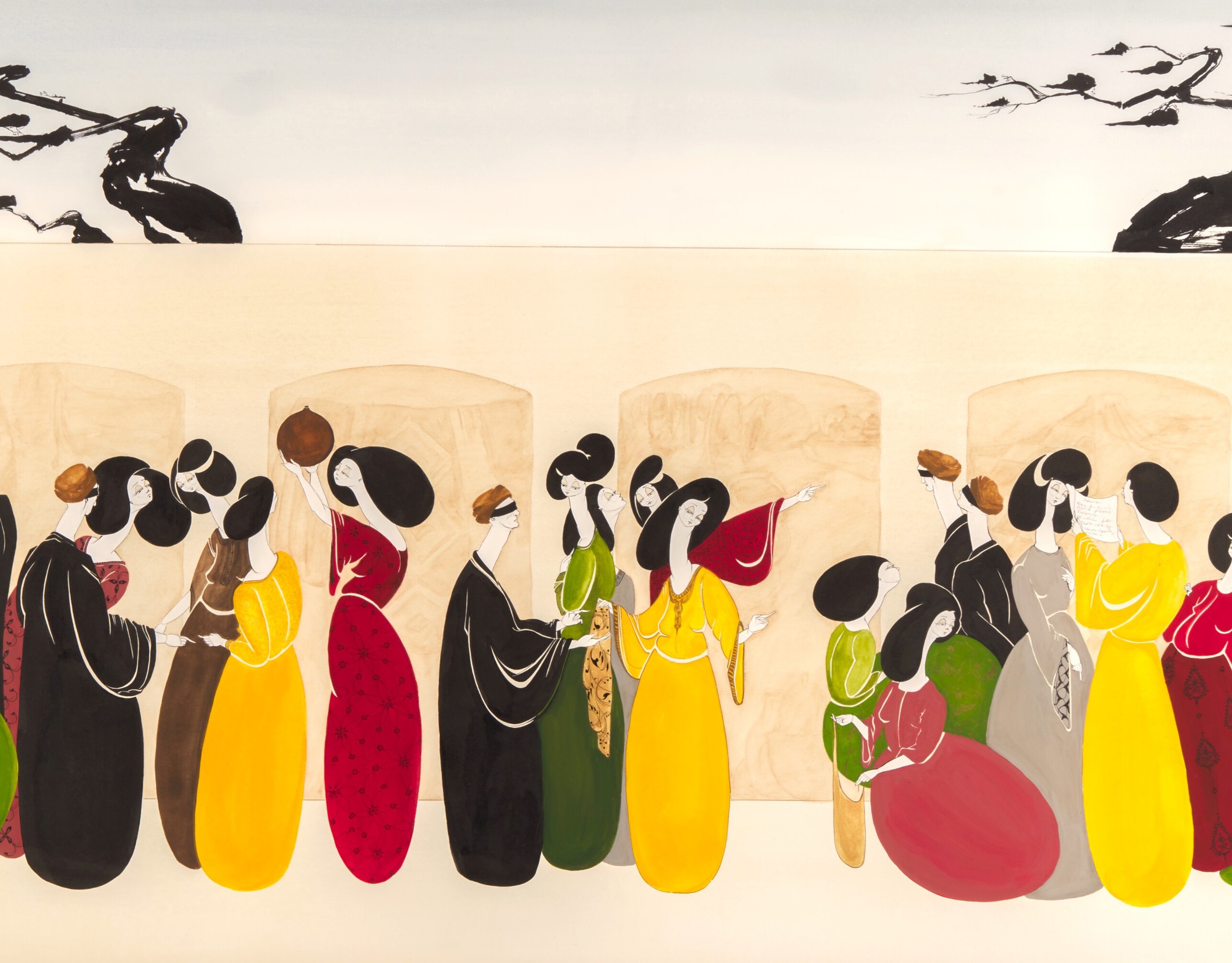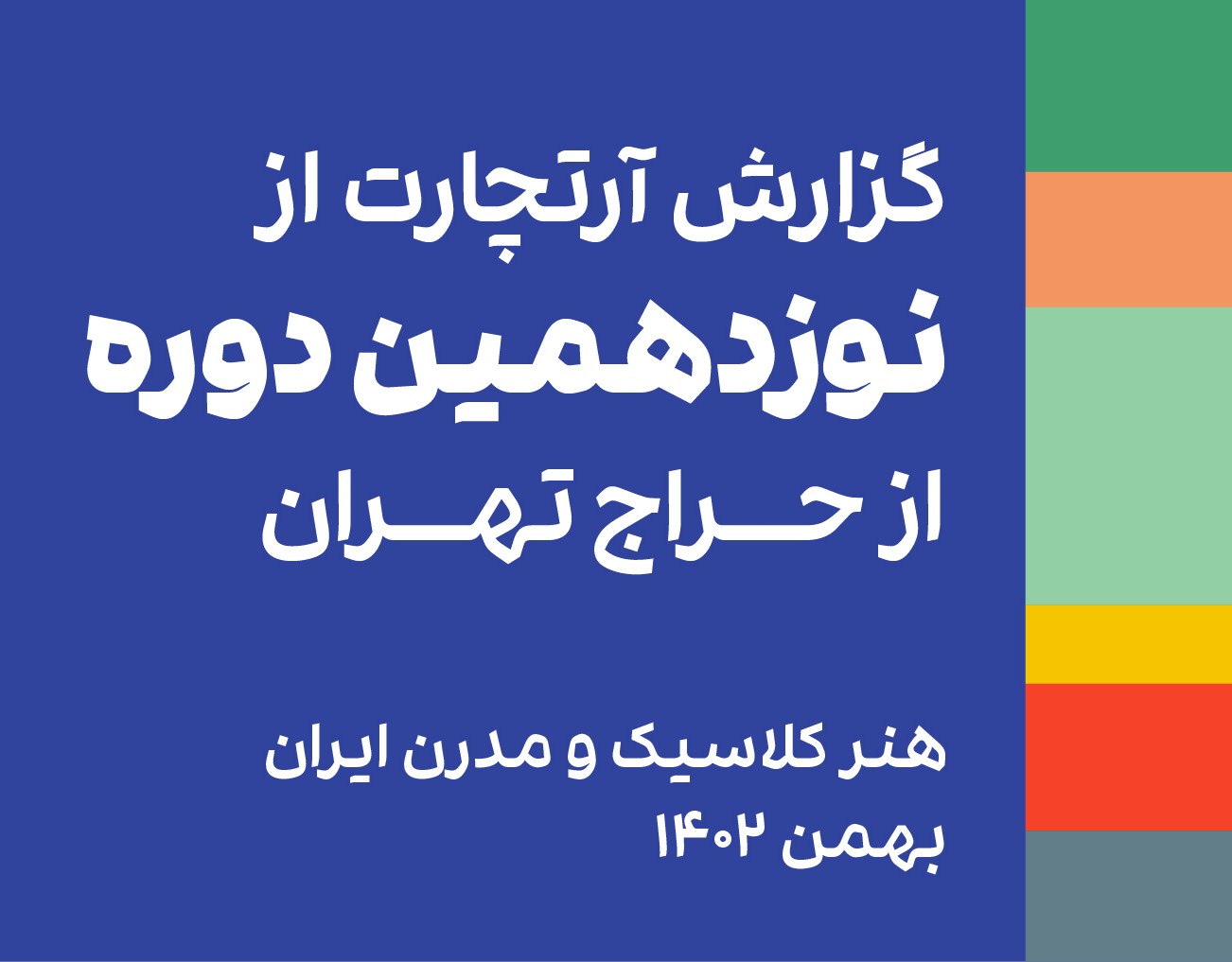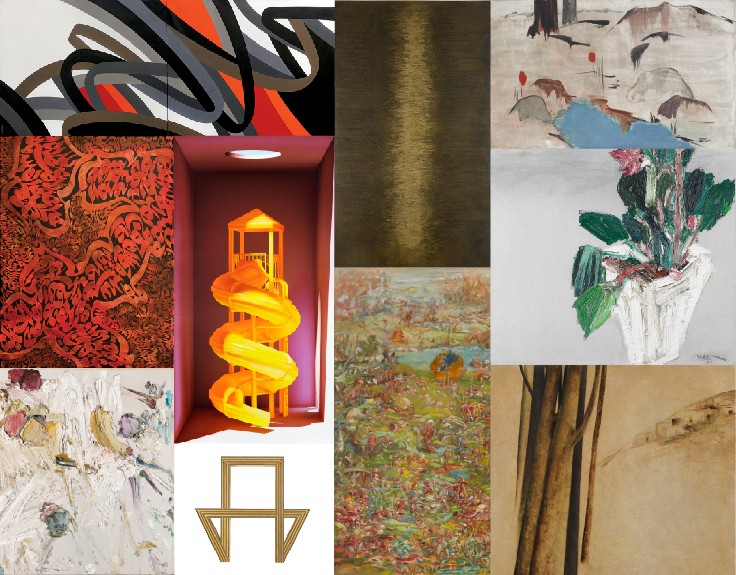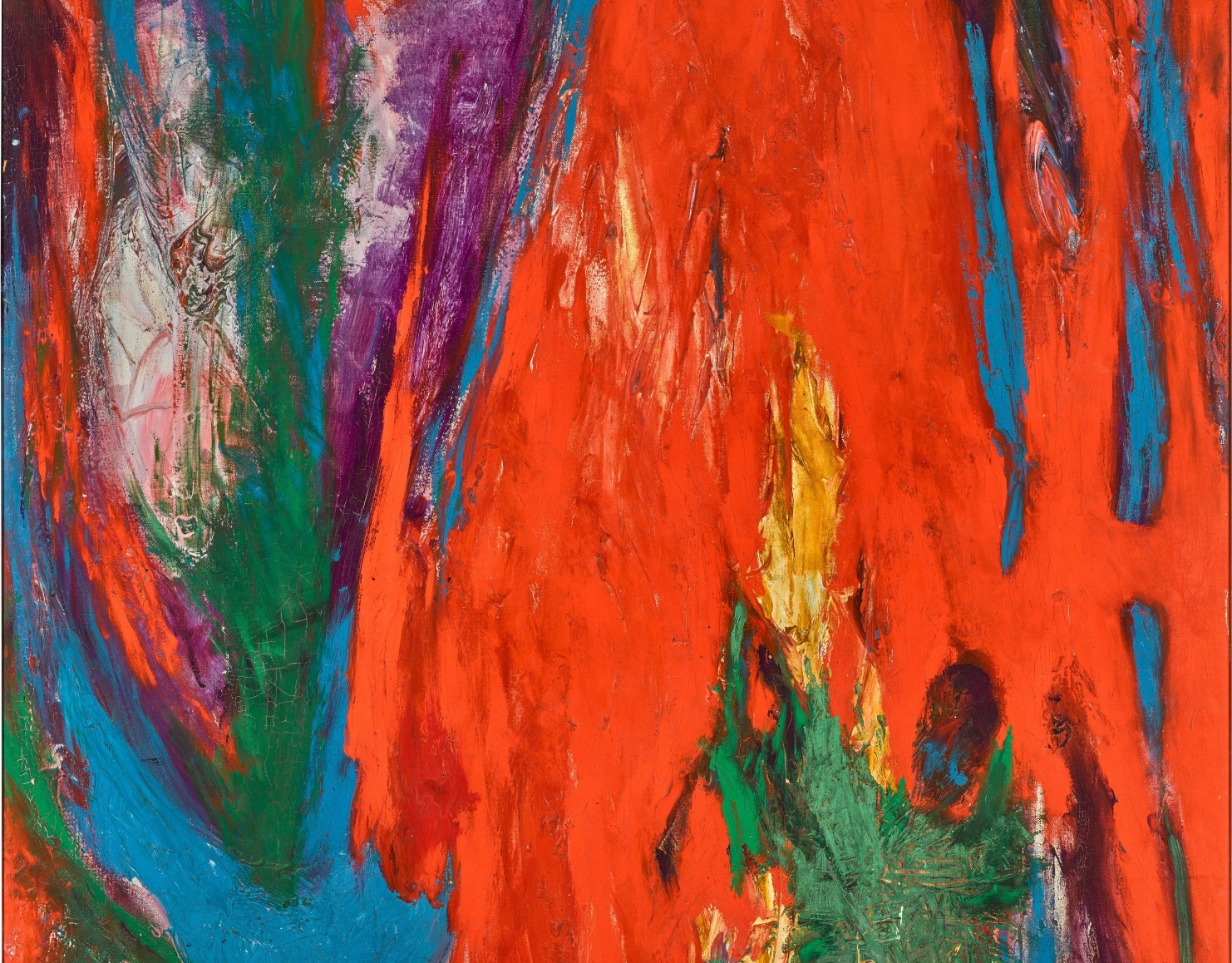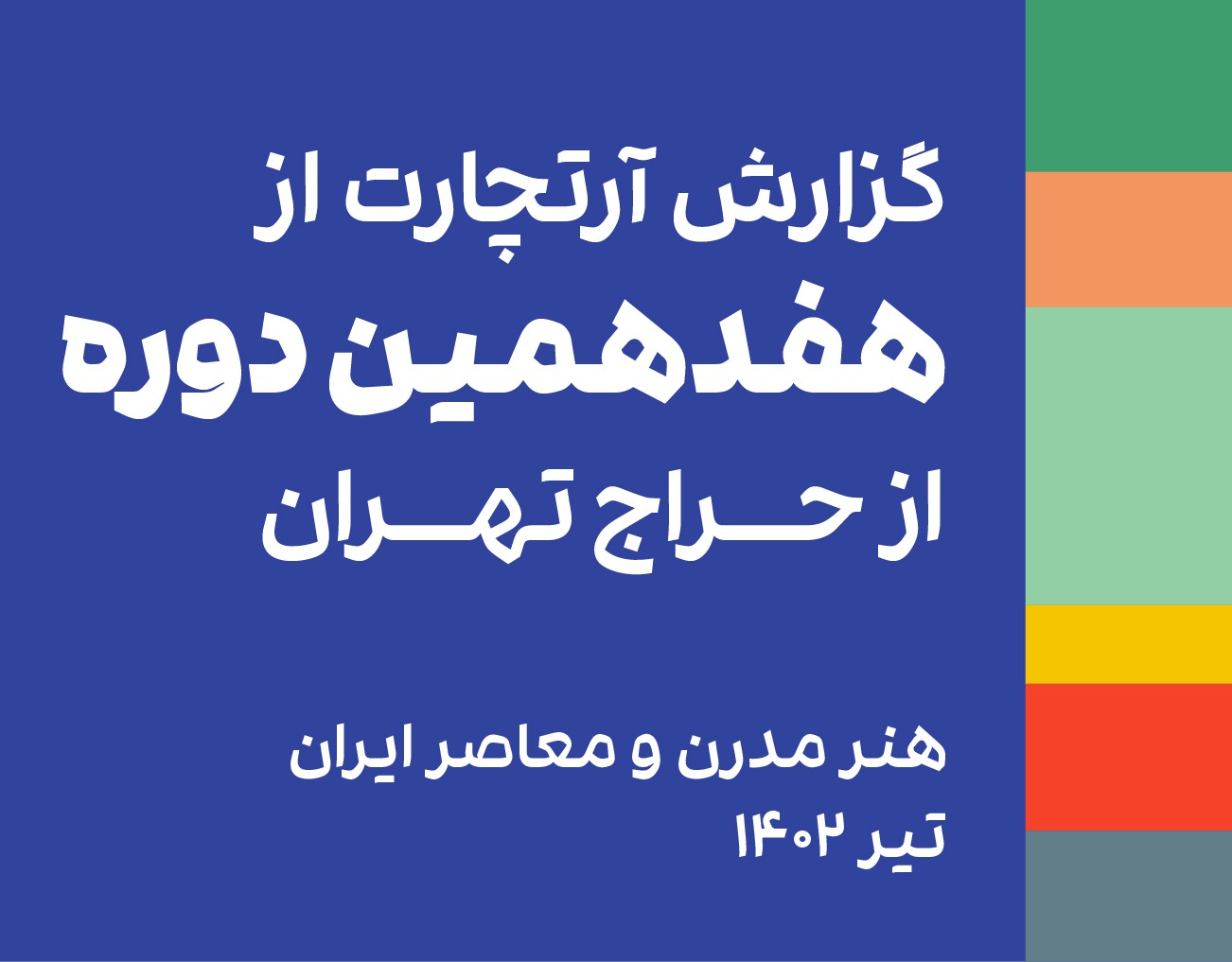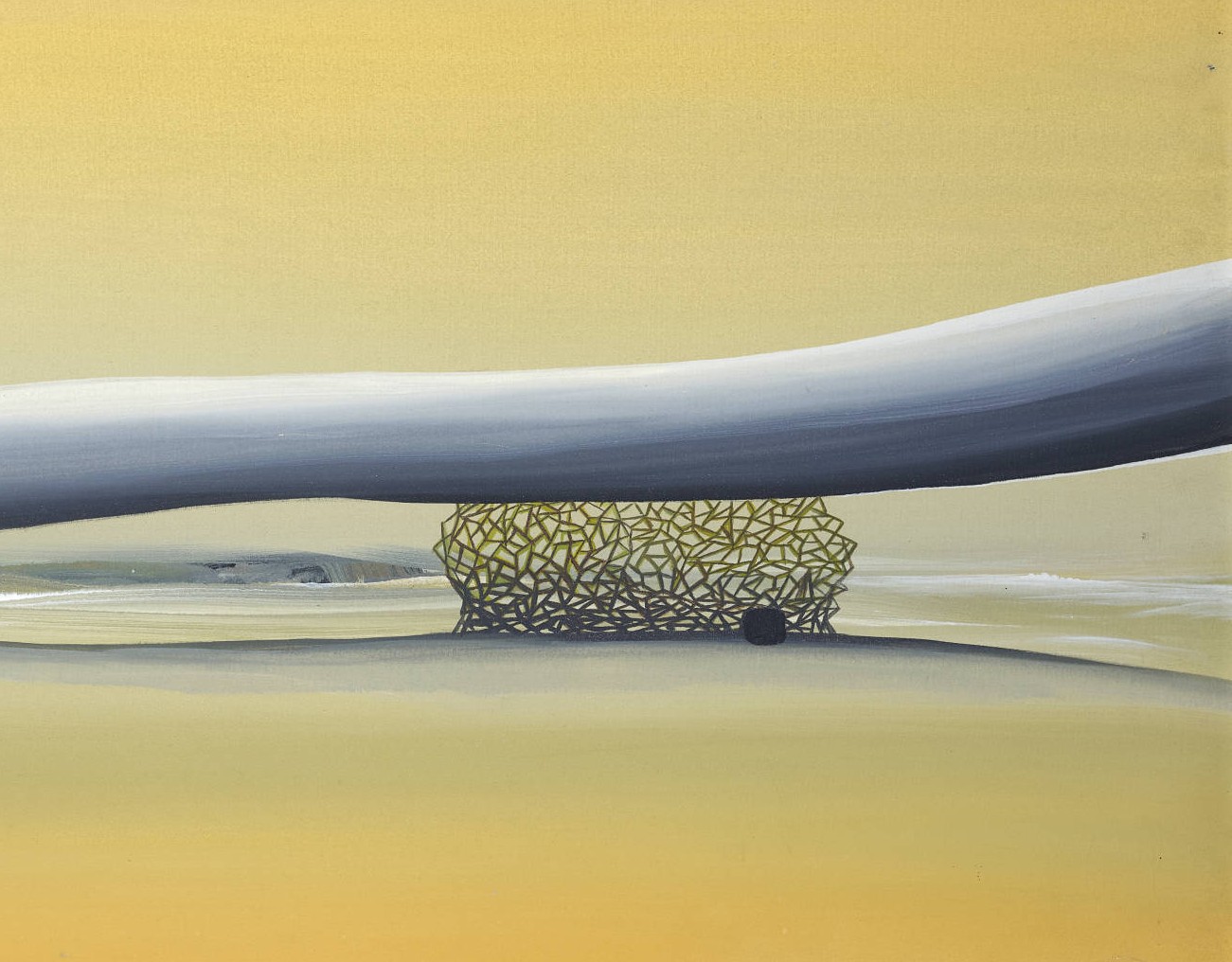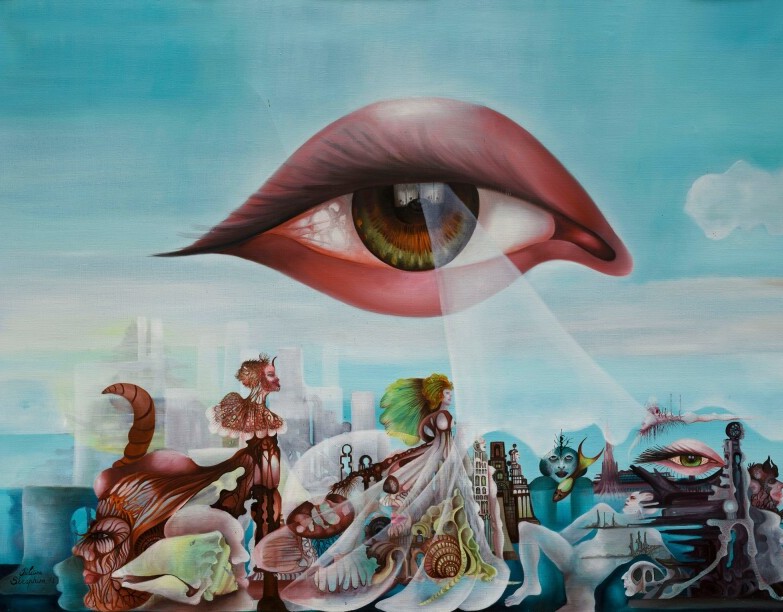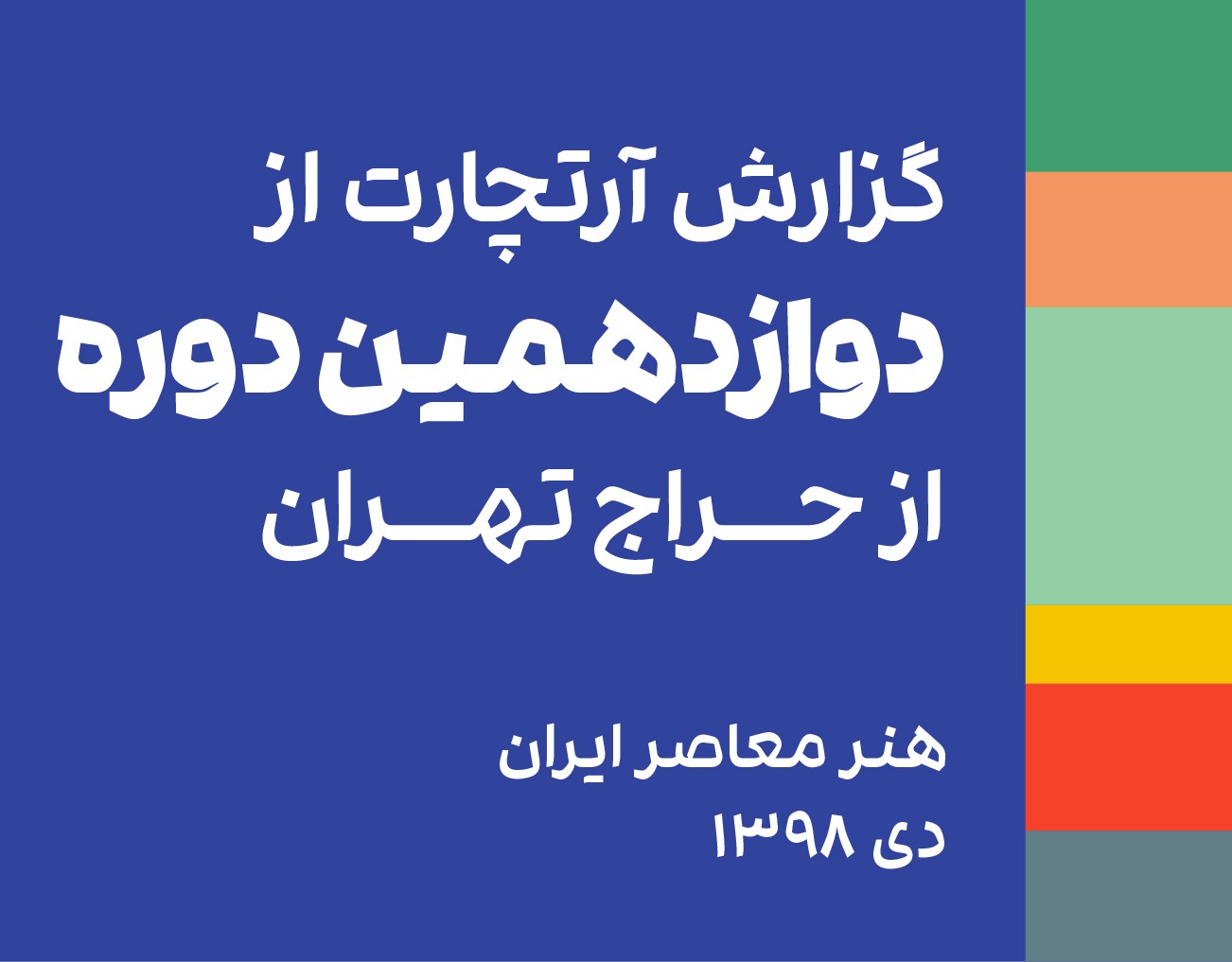About Sohrab Sepehri
Sohrab Sepehri has been entitled the poet and painter of nature.
In 1948 He left his hometown, Kashan, to go to Tehran and study at fine arts faculty at Tehran University till 1953. In 1949, He was introduced to and cooperated with "Khorous Jangi" (Fighting Cock) society led by Jalil Ziapour. He published his first poetry book in 1951titled "Marg-e-Rang". He left for France in 1957 to continue his studies and enrolled in Lithography classes at the Fine Arts School.
His works were presented at the first and second Tehran Biennial.
Sepehri's interest in the far east caused him to travel to India, Pakistan, Afghanistan, and China. He visited Japan in 1960 where he learned wood engraving. Next year, upon his return to Iran, he exhibited his artworks in "Reza Abbasi Hall" which became a turning point in introducing his artistic method and style and established him as an artist with personal style. He then traveled to European, Asian, and American Countries multiple times to exhibit his artworks. In 1977 he published the Anthology of his poetry in the “Hasht Ketab” collection.
Sepehri's attention and interest in Nature through using and minimalizing its existing elements shape a great deal of his most notable works. Recording poetic moments by watercolor or gouache with fast and free brushstrokes were inspired by abstract painting.
many of Sepehri's artworks reflect a combination of western and eastern visual elements. His half-abstract paintings of tree trunks in 70s shaped a new approach in his artworks.
Karim Imami note on Sepehri's painting reads: "The period when he made his famous works, He mostly painted corners of nature in absolute simplicity and plainness - they are almost abstract paintings, but Sepehri rarely paints a whole subject. The painting wants to say I'm a part of a whole. Reconstruct or see the other parts of me in your head or search the real world to find the unpainted parts.”
In 1948 He left his hometown, Kashan, to go to Tehran and study at fine arts faculty at Tehran University till 1953. In 1949, He was introduced to and cooperated with "Khorous Jangi" (Fighting Cock) society led by Jalil Ziapour. He published his first poetry book in 1951titled "Marg-e-Rang". He left for France in 1957 to continue his studies and enrolled in Lithography classes at the Fine Arts School.
His works were presented at the first and second Tehran Biennial.
Sepehri's interest in the far east caused him to travel to India, Pakistan, Afghanistan, and China. He visited Japan in 1960 where he learned wood engraving. Next year, upon his return to Iran, he exhibited his artworks in "Reza Abbasi Hall" which became a turning point in introducing his artistic method and style and established him as an artist with personal style. He then traveled to European, Asian, and American Countries multiple times to exhibit his artworks. In 1977 he published the Anthology of his poetry in the “Hasht Ketab” collection.
Sepehri's attention and interest in Nature through using and minimalizing its existing elements shape a great deal of his most notable works. Recording poetic moments by watercolor or gouache with fast and free brushstrokes were inspired by abstract painting.
many of Sepehri's artworks reflect a combination of western and eastern visual elements. His half-abstract paintings of tree trunks in 70s shaped a new approach in his artworks.
Karim Imami note on Sepehri's painting reads: "The period when he made his famous works, He mostly painted corners of nature in absolute simplicity and plainness - they are almost abstract paintings, but Sepehri rarely paints a whole subject. The painting wants to say I'm a part of a whole. Reconstruct or see the other parts of me in your head or search the real world to find the unpainted parts.”
The Most Expensive Artwork
At Auctions
First Attendance
31 October 2007
# Attendance
90
# Artworks
145
Average Realized Price
185,657 USD
Average Min Estimate
117,493 USD
Average Max Estimate
160,432 USD
Sell-through Rate
83.916%
Average Growth of Artwork Worth
103.46%
Timeline
Modern & Contemporary Middle East auction
28 October
The 24th Tehran - Contemporary Iranian Art auction
3 October
Poets exhibition
30 May
Modern and Contemporary Middle East auction
1 May
Modern and Contemporary Paintings auction
17 December
Landscape Plateau exhibition
13 December
Modern and Contemporary Middle Eastern Including Highlights from the Dalloul Collection auction
31 October
Timeless Creation exhibition
25 October
Modern & Contemporary Middle East auction
22 October
51: a New York art and collectibles sale auction
20 October
Resize exhibition
16 August
Decades Projects 1300-1310 exhibition
2 August
Artibition auction
7 June
Modern and Contemporary Art Dubai auction
31 May
A Collection exhibition
10 May
Modern & Contemporary Middle East auction
25 April
Connoisseur's Look exhibition
19 April
Sunday Art and Antique Estate 148 auction
31 March
The 19th Tehran -Classic and Modern Iranian Art auction
24 January
Gozar Project exhibition
19 January
Modern and Contemporary Middle Eastern Art auction
15 November
20th Century Art/Middle East auction
24 October
The 17th Tehran Modern and Contemporary Iranian Art auction
18 July
Modern and Contemporary Middle Eastern Art auction
24 May
Footprint exhibition
1 May
20th Century Art / Middle East auction
27 April
resize exhibition
13 April
20th Century Art - Middle East auction
25 October
Lotfi x Mashahir Cross 2 exhibition
9 September
Resize exhibition
13 May
20th Century Art / Middle East auction
23 March
Archive 2 exhibition
25 February
Point Of View exhibition
25 February
The 15th Tehran- Modern Iranian Art auction
14 January
14 Designs by Sohrab Sepehri exhibition
28 December
Modern and Contemporary Middle Eastern Art including Baghdadiyat Part II auction
17 November
The Mana Jalalian Collection: A Rare Collection of Iranian Modern Art exhibition
15 November
No.9 auction
3 September
8th Collector exhibition
9 July
The 13th Tehran- Modern and Contemporary Iranian Art auction
15 January
Modern Art + Design 628 auction
24 November
Property from the Collection of Nelson Rockefeller: Eastern Traditions & Western Visions auction
19 November
Middle Eastern, Modern and Contemporary Art auction
11 November
20th Century Art / Middle East auction
20 October
No.6 auction
16 October
Virus of collecting exhibition
4 September
MODERN ART + DESIGN 624 auction
16 June
Modern and Contemporary Middle Eastern Art auction
11 June
Modern Art + Design 620 auction
27 November
Middle Eastern, Modern and Contemporary Art auction
23 October
Modern and Contemporary Middle Eastern Art auction
23 October
20th Century Art / Middle East auction
22 October
یازدهمین دوره حراج تهران auction
5 July
Modern and Contemporary Middle Eastern Art auction
1 May
Middle Eastern Art: Then and Now auction
27 March
Middle Eastern, Modern and Contemporary Art auction
24 October
The 9th Tehran- Classic and Modern Iranian Art auction
29 June
20th Century Art / Middle East auction
24 April
Dubai: Post War and Contemporary Art auction
22 March
Modern and Contemporary Middle Eastern Art auction
28 November
Boundless: Dubai auction
13 November
Architects Signature exhibition
27 October
Middle Eastern, Modern and Contemporary Art auction
25 October
20th Century Art / Middle East auction
23 October
Shams gallery Collection Special Sale exhibition
7 July
هفتمین دوره حراج تهران auction
7 July
Drouot Richelieu, Salle 5, Art Abstrait et Contemporain auction
9 June
20th Century Art/ Middle East auction
25 April
Modern & Contemporary Art auction
18 March
20th Century Art: Middle East auction
20 October
Modern & Contemporary Art auction
18 October
Group exhibition exhibition
30 September
Drouot Richelieu, Salles 5 & 6, Art Abstrait & Contemporain - Peintres Etrangers de la scène Parisienne* auction
15 June
پنجمین دوره حراج تهران auction
27 May
The Art of Lebanon and Modern and Contemporary Middle Eastern Art auction
27 April
Alchemy: Objects of Desire auction
21 April
20th Century Art / Middle East auction
20 April
Dubai: Modern and Contemporary Art Now and Then auction
16 March
Modern & Contemporary Art auction
16 March
20th Century Art - A Different Perspective auction
2 December
Modern & Contemporary Art auction
20 October
Private Treaty for Sale 23058 A Century of Iraqi Art and Contemporary Middle Eastern Art auction
23 June
چهارمین دوره حراج تهران auction
29 May
Modern & Contemporary Arab, Iranian and Turkish Art auction
18 March
Modern and Contemporary Arab, Iranian and Turkish Art auction
21 October
Islamic and Indian Art auction
7 October
سومین دوره حراج تهران auction
30 May
Islamic and Indian Art auction
8 April
Modern & Contemporary Arab, Iranian & Turkish Art auction
19 March
The Winter Catalogue auction
6 December
دومین دوره حراج تهران auction
28 May
Modern and Contemporary Arab,Iranian and Turkish Art Part I auction
16 April
Modern & Contemporary Arab, Iranian and Turkish Art Part I auction
23 October
1Ere Vente a Dubai International Modern And Contemporary Art auction
22 October
اولین دوره حراج تهران auction
22 May
Modern and Contemporary Arab, Iranian and Turkish Art Part II auction
18 April
Modern and Contemporary Arab, Iranian and Turkish Art Part I auction
25 October
Contemporary Art / Arab & Iranian auction
4 October
International Modern and Contemporary Art auction
26 October
Contemporary Art / Arab & Iranian auction
20 October
International Modern & Contemporary Art auction
27 October
Modern & Contemporary Middle Eastern & South Asian Art auction
12 October
Modern & Contemporary Middle Eastern & South Asian Art auction
3 June
International Modern & Contemporary Art auction
29 April
Modern & Contemporary Arab, Iranian, Indian & Pakistani Art auction
24 November
International Modern and Contemporary Art auction
30 October
Modern and Contemporary Arab and Iranian Art auction
23 October
International Modern and Contemporary Art auction
30 April
Modern & Contemporary Arab, Iranian, Indian & Pakistani Art auction
3 March
International Modern & Contemporary Art auction
31 October
Articles
Artchart Half-Year Auction Market Report on Iranian Art - H1 1404 (Mar–Sep 2025) 8 December 2025
Artchart Half-Year Auction Market Report on Iranian Art - H1 1404 SH (Mar–Sep 2025) provides a detailed overview of the key trends and developments observed in this six-month period of the Iranian calendar year. The report examines the presence and performance of Iranian artworks in auctions held worldwide during this timeframe, including the activities of major auction houses, the...
The 22nd Tehran Auction Report: The First Auction of Modern, Classic, and Traditional Iranian Art 18 February 2025
The 22nd edition of Tehran Auction, focusing on modern, classic, and traditional Iranian art, was held on the evening of February 15, 2025, at the Parsian Azadi Hotel in Tehran. The auction was conducted by Shahriar Rabbani, an Iranian presenter and actor. In this edition, 85% of the presented artworks (84 out of 99) were sold, generating a total of $2.6 million. A work by Reza Abba...
Artchart in Conversation with Seyed Saleh Beheshti, Director of B Gallery 26 January 2025
B Gallery officially opened on December 13, 2024, in Tehran with the exhibition "Landscape: Plateau," led by Saleh Beheshti. The exhibition features over 70 works by renowned artists such as Kamal-ol-Molk, Ali Akbar Sanati, Sohrab Sepehri, Abolghasem Saeedi, Marcos Grigorian, Mohsen Vaziri Moghaddam, Parvaneh Etemadi, Farideh Lashai, Pariyoush Ganji, as well as pieces by younger gen...
The Most Expensive Iranian Artworks Sold in 2024 Auctions 24 December 2024
This article presents an overview of the ten highest-priced Iranian artworks sold at auction in 2024. The featured works are by six renowned artists: Ali Banisadr, Sohrab Sepehri, Bahman Mohasses, Mehdi Qadyanloo, Hossein Zenderoudi, and Aydin Aghdashloo. All of these artworks are paintings and were sold exclusively through three prestigious auction houses—Christie's, Sotheby's, and...
A Review of Christie's Modern and Contemporary Dubai Online Auction, Spring 2024 2 June 2024
The Modern and Contemporary Dubai online auction was held on Christie's website from May 9 to May 31, 2024. In this auction, works by 70 artists were featured, totaling 90 artworks. Out of these, 75 pieces were sold, resulting in a total sale of $2.2 million. Fourteen Iranian artists also had their works presented in this auction, achieving a 100% sales rate. The most expensive piec...
A Review of Sotheby's and Millon's Modern and Contemporary Middle Eastern Art Auctions in Spring 2024 1 May 2024
As we step into the spring of 2024, the Middle Eastern art auction season is in full bloom, maintaining its biannual rhythm with showcases in both autumn and spring. Two events of particular note occurred on April 25th, 2024, hosted by both Sotheby's & Millon. This marked the commencement of the year's inaugural Middle Eastern art auction, promising a captivating exploration of...
Iranian Art Market Report for 1402 SH (2023-2024) 20 April 2024
Artchart, which had previously examined the Iranian Art Market in 1401 SH (2022-2023), has once again provided an in-depth report for 1402 SH (2023-2024). The forthcoming report will analyze the data collected in 1402 SH and compare it to previous years to illustrate the current state and trends within the Iranian art market. The initial section provides an overview of the mos...
The 19th Tehran Auction Report 10 February 2024
The 19th Tehran auction, also known as the 5th Classic and Modern Iranian Art auction, took place on January 26, 2024, at Parsian Azadi Hotel, Tehran. With a focus on both modern and classic styles, this auction featured 89 works by 69 artists, resulting in the successful sale of 82 pieces. Remarkably, the auction achieved an impressive sales rate, with 92% of the presented works fi...
The most expensive Iranian works sold in 2023 27 December 2023
With the end of 2023, the Artchart team decided to introduce 10 expensive works of Iranian artists that have been sold at auctions. These works are selected and arranged based on Atchart database and dollar rate. In this short essay, you will read about these works and the successful artists of 2023.
A Report of Sotheby's Middle East Auction, October 2023 28 October 2023
This fall, Sotheby’s is showcasing several important private collections at the heart of its bi-annual 20th Century Art/Middle East sale. From pioneering modernist masters to groundbreaking contemporary artists, one of the binding principles guiding these female-led collections are passion, dedication and the connections and conversations incited by powerful works. It is rare to be...
۱7th Tehran Auction Sales Report 26 July 2023
The 17th Tehran auction: modern and contemporary, was held on Friday July 21st, 2023 at Parsian Azadi Hotel. This auction achieved a total sale of 214 billion tomans equivalent to 4.3 million dollars, which was a growth of 77.8% compared to the previous period. Artchart has observed the 17th Tehran auction in the upcoming report.
From the Sepehri's trees to the painting's of Pooya Aryanpour; An overview of the Modern and Contemporary Middle Eastern auctions at Bonhames and Millon 29 May 2023
The modern and contemporary art auction was held on May 24, 2023 in Bonames and Millon & Associes auction houses. Iranian artists such as Sohrab Sepehri, Manouchehr Yektaei, Parviz Tanavoli and Marco Grigorian to younger ones such as Pooya Aryanpour were participated in these auctions and some of them were among the most expensive one's that were sold. This report is an overview...
Sotheby's 20th Century Art/Middle East Auction Report 2023 3 May 2023
Sotheby's 20th Century/Middle East Art Auction was held from 13-27 April 2023. 17 artworks of 8 Iranian artists were present in this auction. In this report, statistics such as the number of artists, the number of works sold, the nationality of the artists and hammered price are available. In this essay, graphs including growth rate and price range can also be seen.
12th Tehran auction: A Report 28 January 2020
The 12th Tehran auction was able to achieve a 22% growth rate in the field of art transactions by selling 97% of the offered works and reaching 31 billion and 717 million Tomans. .
